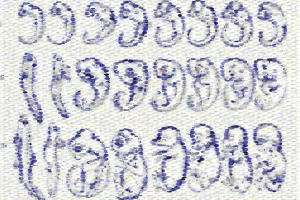Scientists give insight into 200-year-old riddle

(PhysOrg.com) -- University of Manchester researchers have played a vital role in an international study that has revived the 200-year-old question: why do different species share similar stages of embryonic development?
Dr Casey Bergman and Dr Dave Gerrard at Manchester’s Faculty of Life Sciences collaborated on the project with Pavel Tomancak, at the Max Planck Institute of Molecular Cell Biology and Genetics in Dresden, and Uwe Ohler, at Duke University, on a study funded by the Human Frontiers of Science Program published in Nature today.
The team looked at differences in the embryonic development of species in search of what unites animal groups at the level of embryos and their genes, bringing the power of modern molecular techniques to bear on what is a classic problem in biology.
It has long been noted that there are striking similarities between the embryonic development of animals and their evolutionary histories. This relationship between how animals develop and deep evolutionary time hints at the existence of profound connections between different animal species and has therefore captured the imagination of both biologists and the wider public.
However, ever since the first observations were discussed by leading 19th century biologists, such as von Baer, Darwin, and Haeckel, the existence and meaning of these similarities has been fraught with controversy arising from the subjective nature of the comparisons of different animal forms.
While the pioneers of embryology believed that animal species are most similar at the earliest stages of their embryonic development, the arrival of improved observational methods in the 20th century led to a revised proposal. It was noticed that the middle periods of embryonic development exhibit the highest similarity between species belonging to the same broad taxonomic group, known as a ‘phylum’, with earlier and later periods often showing remarkable divergence in form. This so-called 'hourglass model,' has so far been supported by the same types of evidence available to 19th century biologists, namely subjective comparisons of embryo appearance.
Taking advantage of advancements in large-scale gene-based methods, the international team compared the embryonic development of six different fruit fly species at the molecular level. Instead of subjective assessment of a handful of visible traits, they made objective measurements of expression levels for several thousand genes.
The team found that the developmental period when insects are most similar in form is indeed underpinned by a corresponding similarity in gene expression. “This discovery both confirms the conclusions of previous anatomical studies and extends our understanding of the relationship between development and evolution to the molecular level,” explained Dr Kalinka, who led the analysis of the data.
The team also shed light on the reason why there is a period of similarity in the middle of animal embryonic development, a fundamental problem that has so far remained unanswered. Dr Bergman explained: “Our study provides the first solid evidence that this period of similarity between animal species is being actively preserved by natural selection as opposed to being a period that is simply resistant to change for other reasons.”
The results open up new horizons, as the fruit-fly species used are one of the best-studied experimental model systems for genetics, development and evolution. Detecting the hourglass pattern among such closely related species is for biologists equivalent to obtaining a time machine into processes that led to the initial branching on the animal tree 600 million years ago, as these species are very much alive today and can be probed and studied by modern technologies such as genome manipulation and high-resolution imaging. Pavel Tomancak, who led the study, concludes: “In the future we hope to use these new tools to gain deeper insight into the evolutionary processes that shaped the remarkable diversity of animal forms observed today.”
More information: The paper ‘Gene expression divergence recapitulates the developmental hourglass model’ (Nature, December 9, 2010) is available at www.nature.com/nature/journal/ … ull/nature09634.html
Provided by University of Manchester















